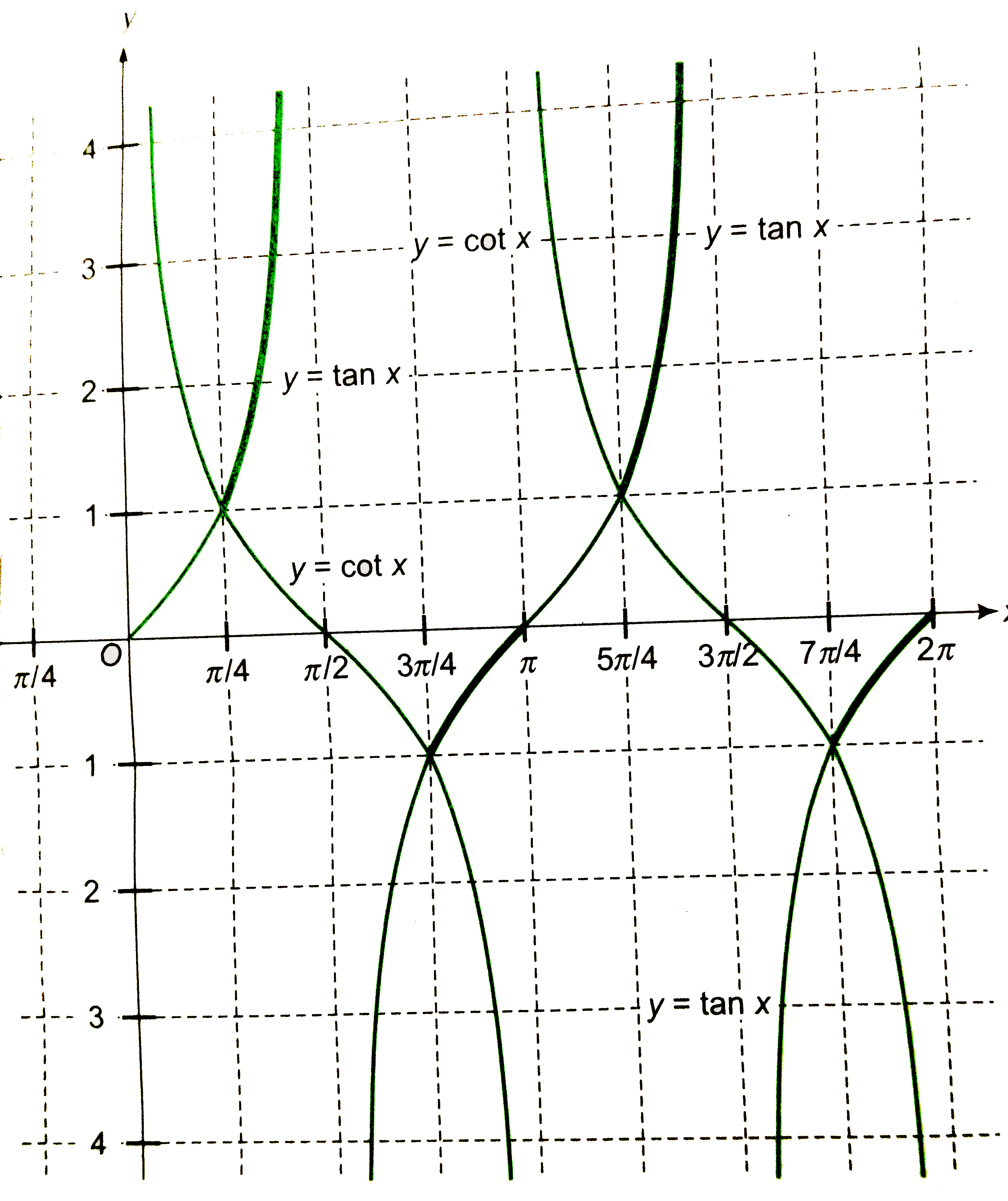Solve tanx>cotx, where x∈[0,2π].Solution in Bengali

We find the tanx≥cotx.
Therefore, the value of tan x is more than the value of cot x.
That is, the values of x for which graph of y=tanx is above the graph of y=cotx.
From the graph, it is clear that
x∈(π/4,π/2)∪(3π/4,π)∪(5π/4,3π/2)∪(7π/4,2π).
Topper's Solved these Questions
- BOOK - CENGAGE PUBLICATIONCHAPTER - TRIGONOMETRIC FUNCTIONS EXERCISE - example10videos
TRIGONOMETRIC FUNCTIONS
- BOOK - CENGAGE PUBLICATIONCHAPTER - TRIGONOMETRIC FUNCTIONS EXERCISE - Concept Application Exercises 2.18videos
TRIGONOMETRIC FUNCTIONS
- BOOK - CENGAGE PUBLICATIONCHAPTER - TRIGONOMETRIC EQUATIONSEXERCISE - Archives (Numerical value type)4videos
TRIGONOMETRIC EQUATIONS
- BOOK - CENGAGE PUBLICATIONCHAPTER - TRIGONOMETRIC RATIOS AND TRANSFORMATION FORMULASEXERCISE - Archives (Numerical Value Type)2videos
TRIGONOMETRIC RATIOS AND TRANSFORMATION FORMULAS
Similar Questions
If 2cosx+sinx=1, then find the valie of 7x+6sinx.
05:57View SolutionTwo sides of a parallelogram are 12 cm and 8 cm. If one of the interior angles is 135∘, then find area of the parallelogram.
07:24View SolutionThe number of all possible values of θ, where 0<θ<π, for which the system of equations (y+z)cos3θ=(xyz)sin3θ,xsin3θ=2cos3θy+2sin3θzand(xyz)sin3θ=(y+2z)cos3θ+ysin3θ have a solution (x0,y0,z0) wiith y0z0≠0 is
03:14View SolutionThe maximum value of the expression 1sin2θ+3sinθcosθ+5cos2θ is………
02:04View Solutiony=(tanx)cotx+(cotx)tanx
08:36View SolutionIf y=(tanx)cotx+(cotx)tanx,prove that dydx=(tanx)cotx.cosec2x(1−logtanx)+(cotx)tanx.sec2x[log(cotx)−1].
01:44View Solutioncotx+tanx=2cosec x
02:29View Solutionहल करें tanx+cotx=2
01:29View SolutionFind the derivative w.r.t. x:
(tanx)cotx+(cotx)tanx07:39View Solutionddx(cotx−tanxcotx+tanx)=
02:50View SolutionIf y=tanx+cotxtanx−cotx, then: dydx=
06:53View Solutionসমাধান করোtanx+cotx=2
02:12View SolutionSolve tanx>cotx, where x∈[0,2π].
02:51View SolutionSolve tanx>cotx, where x∈[0,2π].
02:54View Solutiondifferentiate (tanx)cotx+(cotx)tanx
03:33View SolutionLet f(x)=max{tanx, cotx}. Then the number of roots of the equation f(x)=1√3 in (0,2π) is
03:34View Solution

